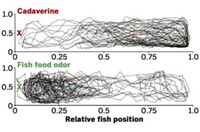Advertisement
Grab your lab coat. Let's get started
Welcome!
Welcome!
Create an account below to get 6 C&EN articles per month, receive newsletters and more - all free.
It seems this is your first time logging in online. Please enter the following information to continue.
As an ACS member you automatically get access to this site. All we need is few more details to create your reading experience.
Not you? Sign in with a different account.
Not you? Sign in with a different account.
ERROR 1
ERROR 1
ERROR 2
ERROR 2
ERROR 2
ERROR 2
ERROR 2
Password and Confirm password must match.
If you have an ACS member number, please enter it here so we can link this account to your membership. (optional)
ERROR 2
ACS values your privacy. By submitting your information, you are gaining access to C&EN and subscribing to our weekly newsletter. We use the information you provide to make your reading experience better, and we will never sell your data to third party members.
Biological Chemistry
Chondroitins Freak Fish Out
Polysaccharide fragments exuded from the skin serve as a chemical alarm to watch for predators
by Sarah Everts
February 27, 2012
| A version of this story appeared in
Volume 90, Issue 9
Behavioral ecologists have long noticed that when a fish is injured nearby members of the same species will rapidly flee. But how this alarm signal is transmitted has remained a mystery. Researchers led by Suresh Jesuthasan of Singapore’s Duke-NUS Graduate Medical School and the Agency for Science, Technology & Research report that one component of this chemical signal is chondroitin sulfate, a polysaccharide that is part of fish skin (Curr. Biol., DOI: 10.1016/j.cub.2012.01.061). Jesuthasan’s team studied schools of zebra fish to discover this fear factor. The researchers note there are probably other molecules involved in raising an alarm, because chondroitin sulfate is common to many species of fish but fish respond strongly only to injury signals from members of their own species. The search is now on for additional molecules that trigger species-specific alarm responses, as well as receptors in the olfactory epithelium that detect the chemicals.





Join the conversation
Contact the reporter
Submit a Letter to the Editor for publication
Engage with us on Twitter